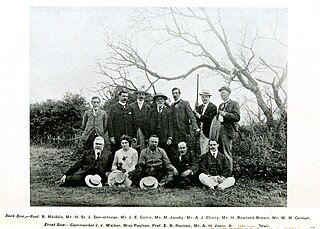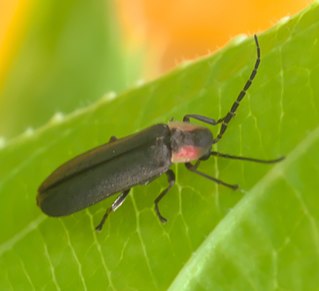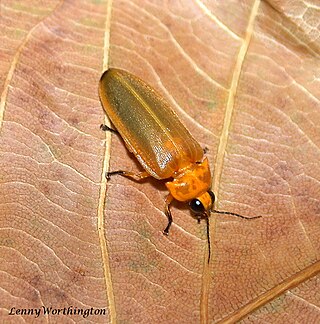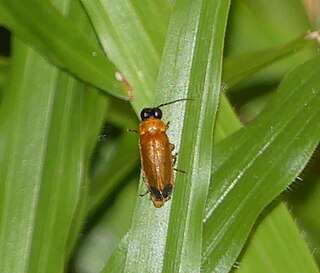
The Photinini are a large tribe of fireflies in the subfamily Lampyrinae. Photinus pyralis is famous in biotechnology for its luciferase gene. This is sometimes employed as a marker gene; genetically modified organisms which contain it start to glow like the firefly when brought in contact with a luciferin-containing medium. Firefly luciferases differ slightly between taxa, resulting in differently colored light and other properties, and in most cases where "firefly luciferase" is used in some application or study, it is the specific luciferase of P. pyralis.

The Lampyrini are a tribe of fireflies in the large subfamily Lampyrinae. The lineage formerly separated as Pleotomini seems to be a specialized offshoot of the Lampyrini not too distant from the type genus Lampyris and is therefore included here. This tribe occurs throughout the Holarctic and contains the typical "glowing" or "continuous-light" fireflies from that region. Some otherwise very advanced Lampyrini, like species in Paraphausis and Pyrocoelia, have degenerated light-producing organs again and communicate primarily or even exclusively with pheromones like the ancestors of the fireflies did.

Martin Jacoby was a German entomologist who specialised in Coleoptera, especially Chrysomelidae. He was also a musician who played in the orchestra of the Royal Italian Opera in London, and later became a violin tutor.
The Pleotomini are a tribe of fireflies in the large subfamily Lampyrinae.

Empidinae, also called dance flies, are a subfamily of empidoid flies. They are mainly predatory flies like most of their relatives, and generally small to medium-sized. Most species are flower visitors and they can be effective pollinators.
Microphotus is a genus of fireflies in the family Lampyridae. Microphotus are usually found in the southwestern region of the United States of America and adjoining parts of Mexico. There are seven described species in Microphotus in the United States and three more in Mexico.

Pyractomena is a genus of fireflies in the family Lampyridae. There are at least 20 described species in Pyractomena.

Aspisoma is a genus of fireflies in the family Lampyridae. There are at least 70 described species in Aspisoma.

Pyropyga is a genus of primarily North American fireflies in the beetle family Lampyridae. There are about 13 described species in Pyropyga. It is among the genera of Lampyridae where both sexes of adults have no bioluminescent organs.

Phengodes is a genus of glowworms in the beetle family Phengodidae. There are more than 30 described species in Phengodes.

Stenotarsus is a genus of handsome fungus beetles in the family Endomychidae. There are more than 50 described species in Stenotarsus.
Pleotomus pallens is a species of firefly in the beetle family Lampyridae. It is found in Central America and North America. The female firefly of this species emits a brighter form of light than the male and this light decreases after she lays eggs; after she has performed this duty, she dies.
Bicellonycha is a genus of fireflies in the beetle family Lampyridae. There are more than 40 described species in Bicellonycha.
The Mastinocerinae are a subfamily of phengodid beetles (Phengodidae). It contains mostly Central and South American species. They are also known as "railroad worms".

Lamprigera is a poorly resolved genus of fireflies or glow-worms in the subfamily Lampyrinae, possibly placed in tribe Photinini. Species of the genus Lamprigera are found in Asia.

Pyrocoelia is a genus of beetles belonging to the family Lampyridae.

Pteroptyx is a genus of fireflies in the subfamily Luciolinae found in Southeast Asia. It has long been noted for the ability to perform synchronous flashing, though not all species synchronize. These synchronizing species have been found on so-called 'firefly trees' and created a growing firefly-watching tour industry in some regions. Species of the genus have been identified in Malaysia, Thailand, the Philippines, and Hong Kong.

Abscondita is a genus of fireflies in tropical Asia. Species in the genus were earlier placed in the genus Luciola but molecular phylogeny studies support their separation.












